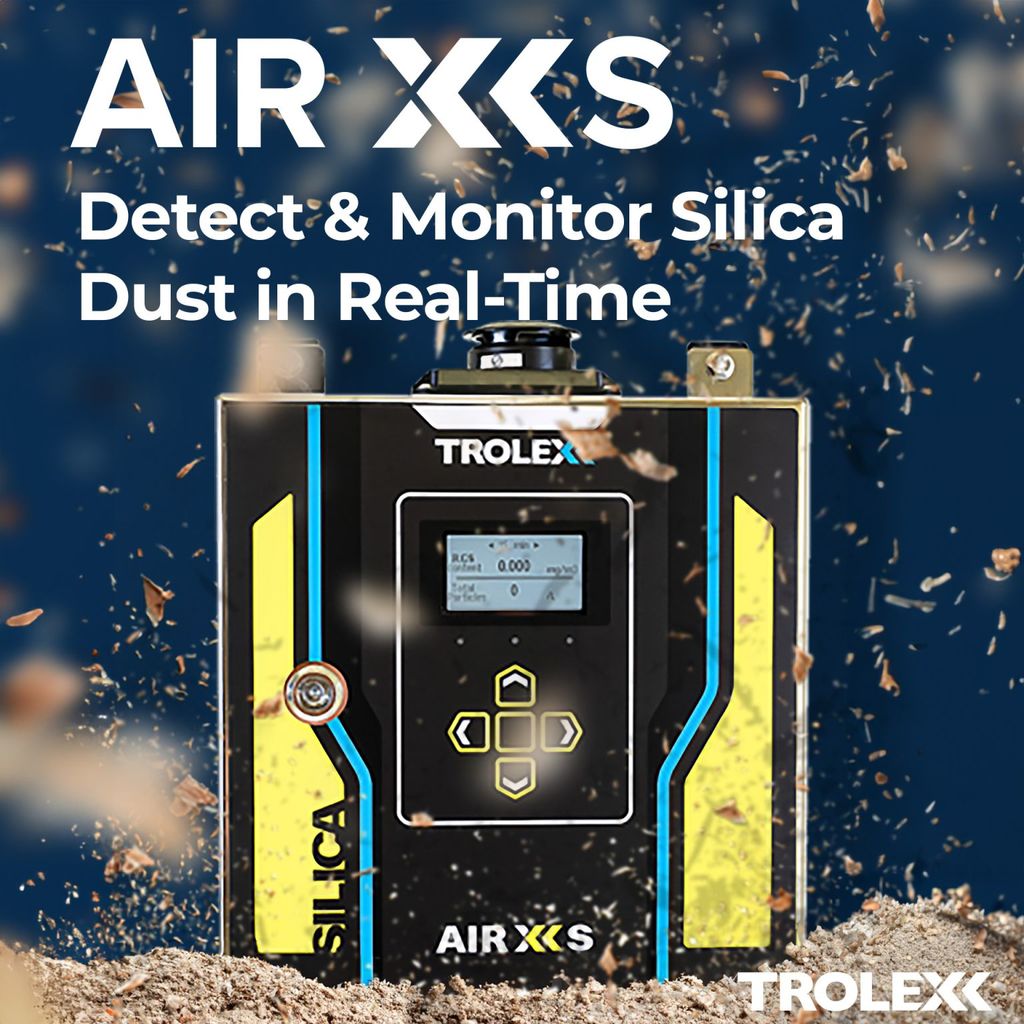
Kelly Rose
Editor

Kelly Rose
Editor
DUST SAFETY in the workplace is of paramount importance, especially when it comes to silica dust. Silica, a natural substance found in rocks, sand, and clay, can become hazardous respirable dust during industrial processes.
The Health and Safety Executive (HSE) estimates that about 13,000 deaths each year are linked to past exposure to dust and chemicals at work. Silica is associated with approximately 4,000 deaths annually from COPD and around 500 UK construction workers die from silicosis each year.
Employers are urged to take responsibility for preventing lung diseases caused by exposure to silica dust. This can be achieved by implementing measures that control and minimise dust generation. Techniques such as water suppression and local ventilation systems are effective in reducing airborne dust particles and minimising the risk of dust-related lung diseases. Investing in personal or deployed dust monitors can help raise awareness of immediate exposure or "events" that release more dust, and this can be a game-changer in protecting workers' health. Being proactive in preventing dust not only protects employees but also ensures compliance with the Control of Substances Hazardous to Health Regulations 2002 (COSHH).
Potential future developments for Respiratory Crystalline Silica (RCS) regulations
Concern has been growing towards how the UK responds to the risk of silica dust, leading to discussions between the government and industry, The APPG Silicosis Report 01-23 offers key clinical and regulatory recommendations for enhancing workplace safety related to silica dust.
Ensuring dust safety, particularly in managing silica dust, is not just a legal requirement; it's a moral obligation for employers. Adhering to the guidelines laid out by the Health and Safety Executive (HSE) is crucial for creating safer workplaces and mitigating the long-term health effects of dust inhalation.
Prioritising prevention, conducting risk assessments, implementing effective control measures, providing education and training, and, when necessary, engaging in health surveillance collectively contribute to dust safety and employee well-being.
A concerted effort in managing dust, complying with regulations, and safeguarding health ensures a healthier and safer work environment for all.
Air quality and dust monitoring solutions from Shawcity
Shawcity is thrilled to annouce the expansion of our product range through an exciting partnership with Trolex. This collaboration has introduced a range of advanced tools for dust detection, analysis, and monitoring. Among the new additions is the Air XS silica monitor, which has won numerous awards for its real-time updates on silica levels and hazard alerts.
The Trolex AIR XS Silica Monitor is designed to provide detailed, accurate and real-time data on airborne RCS content based on the chosen installation environment. Using innovative optical refraction technology (ORT), the AIR XS combines a consistent particle flow rate with advanced sensing technology to provide information on airborne dust mixtures.
As the AIR XS processes and analyses particulate data and an adaptive algorithm is used to calculate and identify the average level of RCS from the overall particle count. Users can select rolling averages across 15-minute, 1, 4, 8, and 12-hour periods, as well as custom alarm levels.
Measurements can be viewed via the instrument display or as historical readings using the accompanying Trolex Breathe application software.
For more information or to request a free demonstration contact the Shawcity team on 01367 899420 or email solutions@shawcity.co.uk.
Sources
Health and Safety Executive (HSE), 2023. Control of exposure to silica dust: A guide for employees. Available at: [Accessed 29 Sep. 2023].
Health and Safety Executive (HSE), 2023. Silica dust - Cancer and construction - Managing occupational health risks in construction. Available at: [Accessed 29 Sep. 2023].
WorkSafe ACT, 2023. Silica dust - WorkSafe ACT. Available at: [Accessed 29 Sep. 2023].
Health and Safety Authority, 2023. Crystalline Silica Dust Information Sheet - Health and Safety Authority. Available at: [Accessed 29 Sep. 2023

91 - 92 Shrivenham Hundred Business Park
100 Business Park
Watchfield
SN6 8TY
UNITED KINGDOM
01367 899420